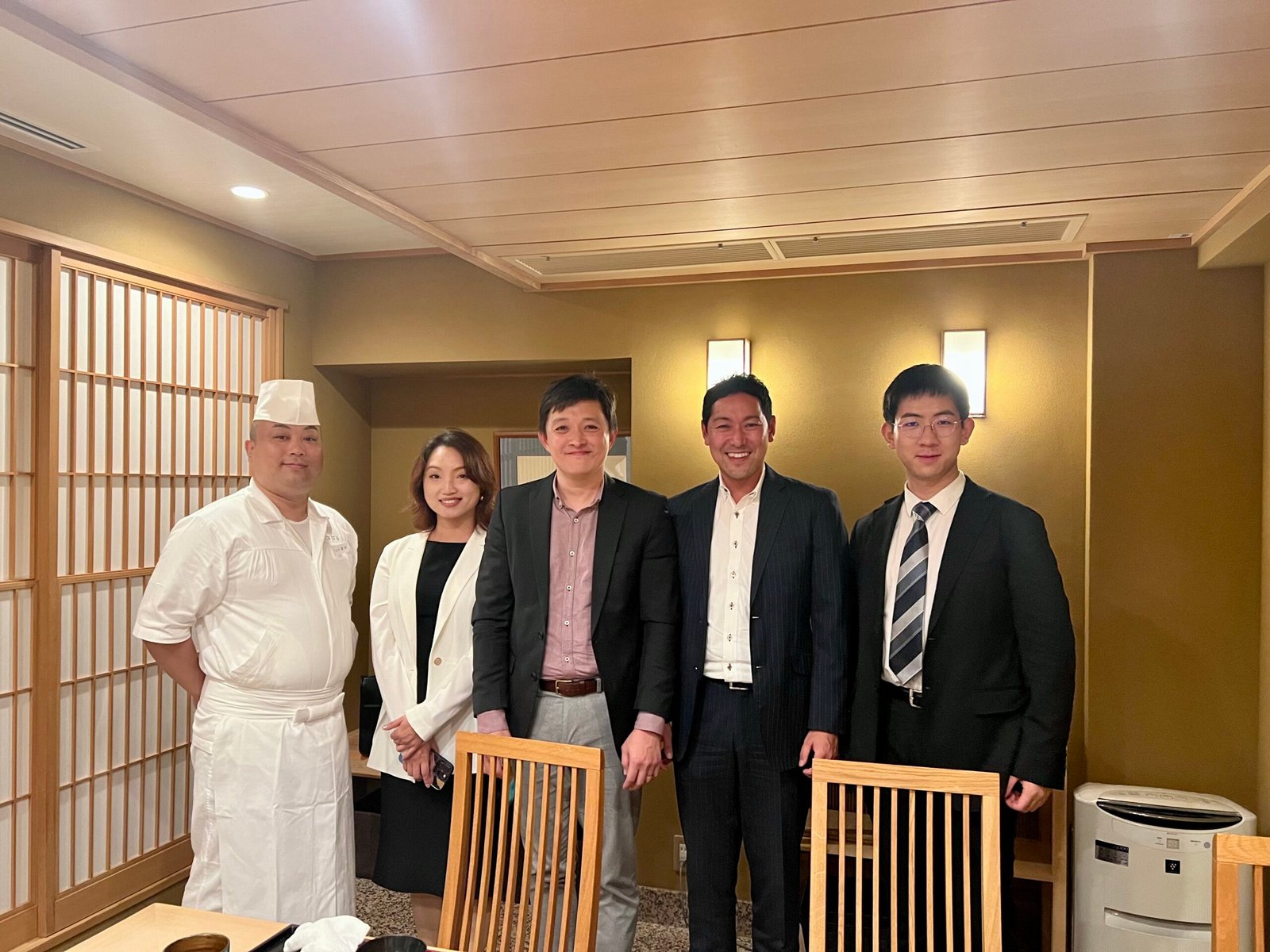1. What is Omakase?
Omakase is a Japanese term that literally means ‘leave it to the chef.‘ This means there is no set menu, and what you eat is entirely up to the chef. It can be a fun experience, like embarking on an unknown culinary journey. Omakase restaurants typically offer sushi and other seafood dishes, which are often considered fancy Japanese cuisine.

Generally, there are no tables for omakase. All the guests sit at the counter, where the chef and their assistants prepare the food right in front of you. The staff might also chat with you while working—whether it’s about your life or explaining the dishes. It makes the experience even more engaging and interesting!
2. How much does Omakase cost?
Omakase restaurants are usually expensive. If you search for them on Google Maps in Tokyo, you’ll find that most charge over 10,000 JPY (around 67 USD) per person. In contrast, normal restaurants in Tokyo typically charge between 2,000 and 4,000 JPY (13-27 USD).

3. What should you pay attention to when attending Omakase?
Omakase restaurants are often decorated in a traditional Japanese style, which adds to the immersive experience. At the same time, it’s important to follow the etiquette for traditional Japanese dining (washoku), as it’s expected in these settings.
Japanese food etiquette can be quite complicated, and even many Japanese people don’t always follow all the rules perfectly. So, don’t worry too much about them! As foreigners, we’re usually given some leeway if we accidentally break a few taboos. 😉 Here are only five important tips I want to share with you.
(1) Always make a reservation before visiting any omakase restaurant. And be sure to check if they accept foreigners, especially when you’re traveling in Japan.
(2) Don’t be late if you have a reservation, and cancel according to each restaurant’s policy.
(3) Finish your dish before the next one is served. It’s considered bad manners (shitsurei) to have two dishes on your plate at the same time.
(4) Don’t stab food with your chopsticks, and never use your hands to serve food.
(5) Let the chef know if there’s anything you don’t want to eat (religious restrictions, allergies, etc.), and they’ll make sure to avoid those ingredients for you.
4. My Experience at Omakase
I’m excited to write this post because I went to a Sushi Omakase last week. It was a super fancy one in Ginza, Tokyo. The entry fee was 35,000 JPY per person (around 234 USD, excluding tax). Of course, this is way beyond my budget. Luckily, my boss was hosting the guests, so I got to enjoy the experience as a guest.
After taking the elevator to the third floor, we were greeted with a chorus of voices—Irasshaimase (welcome)!—from the chef team as soon as we entered. The decor featured warm yellow tones and plenty of wood, giving the place a cozy, retro feel. The four of us sat down at the counter stools, leaving three empty seats. The chef mentioned that those seats were originally for other guests, but they had canceled. With only seven seats in total, the restaurant focuses on offering high-quality, personalized service.
At the beginning, the chef asked if there was any food we didn’t want to eat. I told him I’m allergic to shrimp and would appreciate it if they could avoid serving it to me. Later on, they offered an alternative fish dish for me while serving a shrimp dish to the others.

As you might know, Japanese cuisine features a lot of raw dishes, like sashimi. So, most of the food served at the omakase was raw as well. I watched the chefs take out fresh fish, cut it into various shapes right in front of us, brush on sauces, and create dish after dish with rice and other ingredients.
The chefs introduced each dish, and when they learned I was Chinese, they even explained everything in English and brought me a Chinese version of the menu booklet (even though I understood Japanese). It was such a thoughtful gesture, and I really felt well taken care of. Unfortunately, I can’t remember all the dishes, but I do recall there was o-toro, chu-toro, flounder, crab, and caviar.
The flavors were relatively light, primarily salty, umami, and a bit sour, with much of the taste coming from the ingredients themselves. Overall, the flavors were fantastic. I was truly amazed when the chef told us that the fish had just arrived from the sea at 4 PM that very day.
Throughout the meal, the charming server kept refilling our hot tea and clearing away the dishes. My personal favorite dish was something similar to a savory egg custard, with some seafood mixed in. I think the reason I liked it so much was that it was one of the few hot dishes. I have to admit, I personally prefer cooked food.

As I began to feel full, the chef informed us that the set was finished, but there were two additional dishes available for anyone who wanted more. I didn’t ask for them since I was already satisfied, but my boss did. The portion was just right—it left you feeling neither unsatisfied nor too full.
As we were about to leave, my boss suggested taking a photo with the chef. We arrived at 6 PM and left around 8 PM. It was truly a fantastic experience.

5. Conclusion
As you can see, the food offered in Omakase is completely unpredictable. Each dish is a surprise, making it a great choice for those who love culinary adventures. It’s not for everyone, but if you’re open to trying new things, you’ll likely find the experience exciting and memorable. And trust me, most of the surprises are delightful, not disappointing!
The creativity and quality of the food make the whole experience truly special, and it’s a great way to step out of your comfort zone and explore the unexpected in Japanese cuisine.



